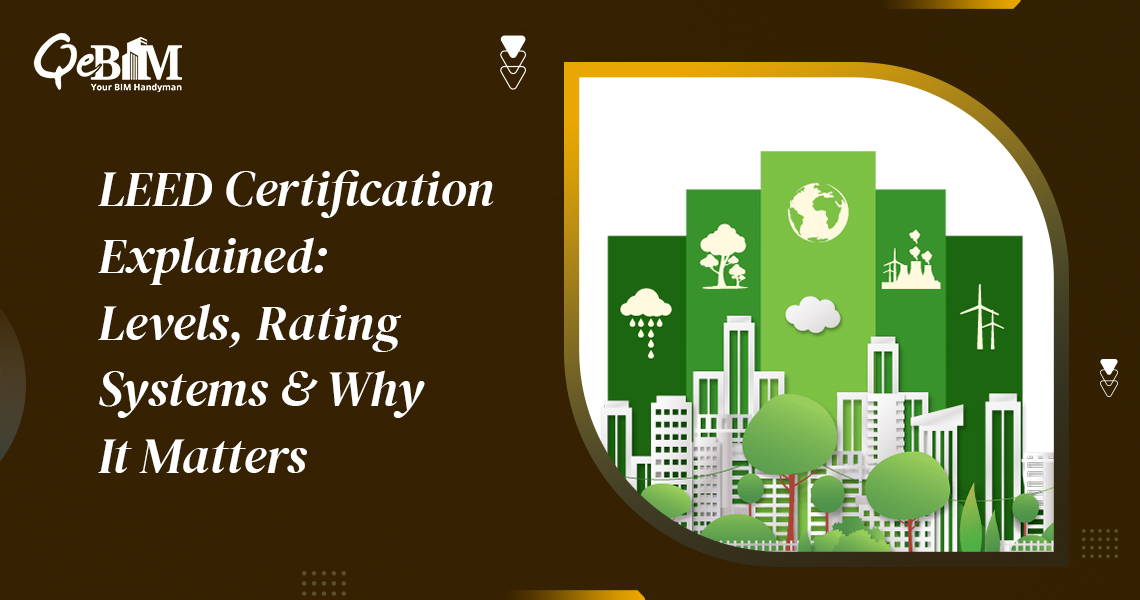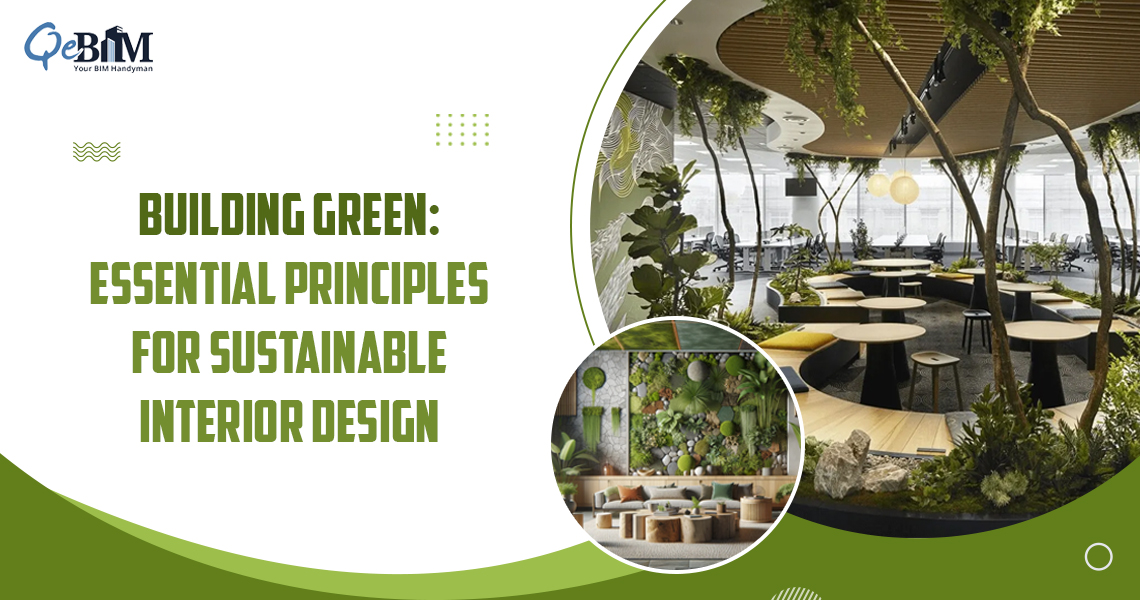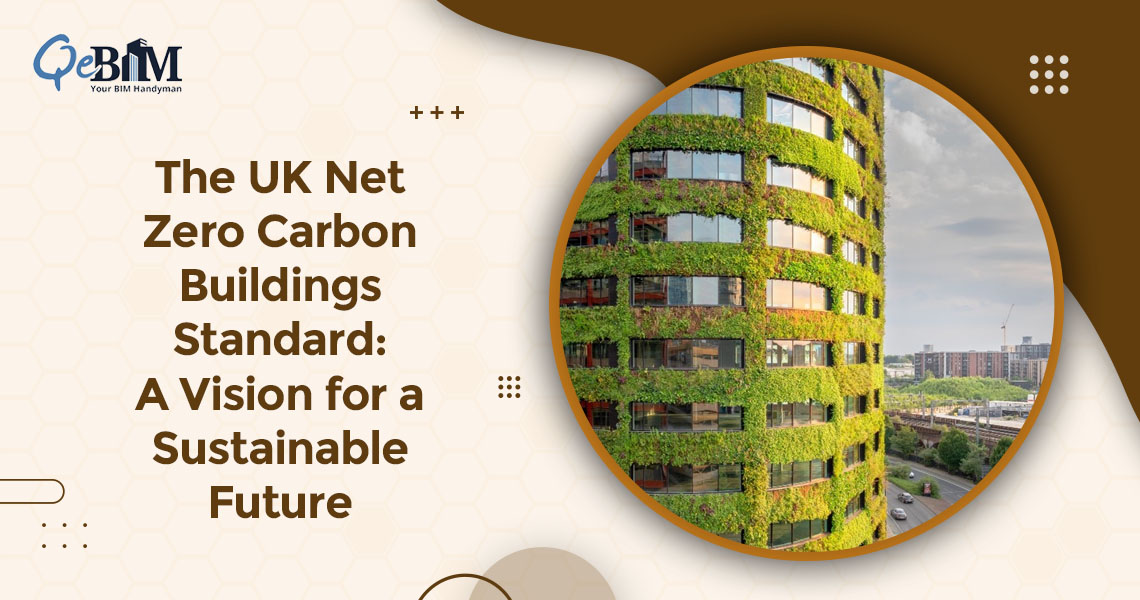Introduction
As environmental concerns reshape the future of architecture and construction, sustainability has become a key differentiator in the project design and delivery. LEED (Leadership in Energy and Environmental Design) developed by the U.S. The U.S. Green Building Council (USGBC) administers the world’s most widely adopted green building certification system. It serves as a blueprint for sustainably built environments enhancing the environmental performance, reducing the resource consumption as well as promoting the healthier spaces for occupants.
But what do the different LEED certification levels mean and how can they benefit both the developers and the end-users?
Let’s explore the framework, certification tiers and also how the LEED promotes a smarter, more responsible approach towards the building design.
What is LEED Certification?
LEED uses a point-based system to assess a building’s environmental performance across multiple sustainability criteria. These includes:
- Sustainable Sites
- Water Efficiency
- Energy & Atmosphere
- Materials and Resources
- Indoor Environmental Quality
- Innovation in Design
- Regional Priority
Each project earns points based on how well it addresses these categories and the total points determine the certification level.
The Four LEED Certification Levels
LEED certification is structured into four distinct levels. Each tier reflects the degree of effort and achievement in the sustainable building performance:
1) LEED Certified (40–49 points)
Demonstrates the basic achievement in the green building performance. Ideal for the projects beginning with their sustainability journey, this level is attainable without extensive modifications to the conventional designs.
2) LEED Silver (50–59 points)
Recognizes the solid commitments to the sustainability and resource efficiency. LEED Silver often includes modest enhancements in the energy systems, lighting and material selection making it a practical goal for the many commercial as well as the residential buildings.
3) LEED Gold (60–79 points)
Indicates the exceptional sustainability practices. Projects at this level often incorporates the advanced Sustainably & Energy Analysis, optimize HVAC systems, use eco-conscious construction materials and features the sustainable Interior Design Services to improve comfort, wellness and daylighting.
4) LEED Platinum (80+ points)
The highest certification tier, LEED Platinum signifies the top-tier environmental performance. These buildings often serves as the innovation leaders featuring net-zero energy goals, renewable energy systems and highly integrated green design elements.
LEED Certification Levels and Rating System
LEED is structured into distinct categories that cater to a wide range of buildings and development objectives. This ensures that the LEED can be adapted to diverse project types right from the interior fit-outs to the entire city planning initiatives.
- LEED BD+C – Designed for Building Design and Construction projects
Applies to the newer construction or major renovations including the commercial buildings, schools and even the healthcare facilities. It addresses the full scope of design and construction activities with a focus on the site selection, water and energy use along with the material optimization.
- LEED ID+C Designed for Interior Design and Construction
Perfect for the commercial interiors and tenant spaces. This rating system emphasizes on materials selection, Interior Design Services, lighting efficiency and indoor air quality. Ideal for the office fit-outs and retail interiors.
- LEED O+M Designed for Building Operations and Maintenance
Covers the existing buildings seeking to improve their performance. It supports continuous monitoring of the energy use, maintenance routines and also the operational practices to reduce the environmental impact.
- LEED ND Designed for Neighborhood Development
Takes a broader view by focusing on the entire communities or districts. It integrates the smart growth principles, green infrastructure and sustainable urban planning strategies.
- LEED for Cities and Communities
Designed for the governments and municipalities, this category addresses the sustainability across the entire cities. It includes metrics like energy usage, transportation systems, health metrics and even the water management strategies.
LEED Certification Levels: The Benefits for Occupants
Achieving LEED certification does more than check a box, it brings the measurable benefits for the people who use these spaces every day:
- Improved Indoor Air Quality: LEED encourages low-emitting materials and proper ventilation resulting in the healthier environments.
- Thermal and Acoustic Comfort: Smart HVAC design and material choices improves the user comfort.
- Enhanced Natural Light & Productivity: Thoughtful daylighting, space planning and interiors positively impact the mood and work efficiency.
- Energy Cost Savings: High-performing systems reduces the energy bills, freeing up the resources for other operational needs.
- Positive Environmental Impact: Occupants benefits from a sense of contribution to larger sustainability goals.
Conclusion
Understanding the LEED certification levels empowers the stakeholders to align the project goals with the sustainability benchmarks that benefits people, profits and even the planet. Whether it’s a new office space, a renovated school or a community-level initiative, LEED offers a flexible yet rigorous framework to measure as well as reward the sustainable performance.
By integrating the Sustainably & Energy Analysis and holistic Interior Design Services early in the project lifecycle, teams can not only achieve their desired LEED level but also enhance the occupants experience along with the long-term operational value.
LEED isn’t just about building better—it’s about building responsibly.


